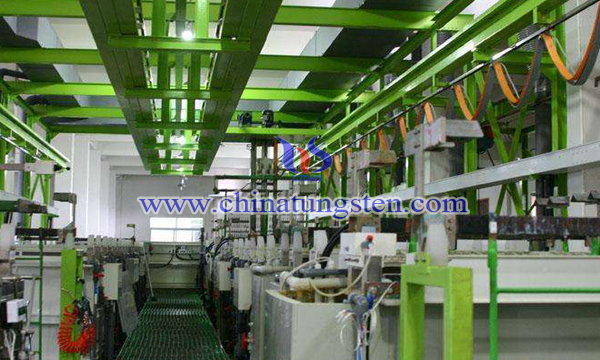Preparing Tungsten Trioxide Nanofilm Using Drop Coating Method
- Details
- Category: Tungsten Information
- Published on Friday, 10 August 2018 17:46
Photoelectrochemical cells (PEC) decompose water to produce hydrogen by converting solar energy into chemical energy. It is considered to be one of the most important ways to obtain energy by replacing fossil energy, and it has received widespread attention. Finding a semiconductor material with potential applications through various methods is an important research direction in this field.
 Compared with traditional semiconductor materials such as titanium dioxide and iron oxide, tungsten trioxide has a proper band gap (2.5 eV to 2.9 eV), and the valence band and conduction band have electrode potentials of 3.2 eV and 0.4 eV, respectively. It is O2, and has the advantages of low price, high stability, non-toxicity and light corrosion resistance in acidic and neutral environments. It is an excellent material to be an anode in the decomposition water material for producing oxygen.
Compared with traditional semiconductor materials such as titanium dioxide and iron oxide, tungsten trioxide has a proper band gap (2.5 eV to 2.9 eV), and the valence band and conduction band have electrode potentials of 3.2 eV and 0.4 eV, respectively. It is O2, and has the advantages of low price, high stability, non-toxicity and light corrosion resistance in acidic and neutral environments. It is an excellent material to be an anode in the decomposition water material for producing oxygen.
At present, the most common preparation methods of tungsten trioxide nanofilms include hydrothermal method, sol-gel method, atomic deposition method, electrode position method and chemical vapor deposition method. Compared with the high equipment requirements and complex preparation processes of atomic deposition, electrodeposition and chemical vapor deposition, the hydrothermal and sol-gel methods are simpler and have lower temperature requirements. However, the above existing methods cannot prepare tungsten trioxide nanofilms with high photoelectric performance under the premise of low experimental cost, simple operation and high safety.
In order to solve the above technical problems, a tungsten trioxide nanofilm can be prepared by a drop coating method:
Step 1, the tungsten hexachloride is dissolved in absolute ethanol, and stirred to obtain a precursor solution; the molar concentration of tungsten hexachloride in the precursor solution is 5mmol / L ~ 60mmol / L;
Step 2, use a drop coating method, 5 μL to 100 μL of the precursor solution described in the first step is applied to the surface of the substrate and blow dried, and then the substrate is heat-treated at a temperature of 80 ° C to 150 ° C for 3 min to 5 min. After cooling to room temperature;
Step three, repeating step two until a film layer is obtained on the surface of the substrate;
Step 4: heat the film layer in the third step to a high temperature of 400 ° C to 550 ° C for 2 h to 6 h, and obtaining a tungsten trioxide nanofilm on the surface of the substrate after high temperature calcination.
The above process has low equipment requirements, simple operation, low cost and high safety performance, and the prepared tungsten trioxide nanofilm exhibits excellent photoelectric performance and high stability as a highly efficient photoanode material, and can be applied to photoelectrochemical decomposition of seawater. In the hydrogen production system, solar energy is efficiently converted into clean energy, effectively alleviating the current shortage of fossil fuels and serious environmental pollution.
- Tungsten Oxide Manufacturer & Supplier, Chinatungsten Online: www.tungsten-oxide.com
- Tungsten News & Prices of China Tungsten Industry Association: www.ctia.com.cn
- Molybdenum News & Price: news.molybdenum.com.cn
- Tel.: 86 592 5129696; Fax: 86 592 5129797; Email: sales@chinatungsten.com



 sales@chinatungsten.com
sales@chinatungsten.com